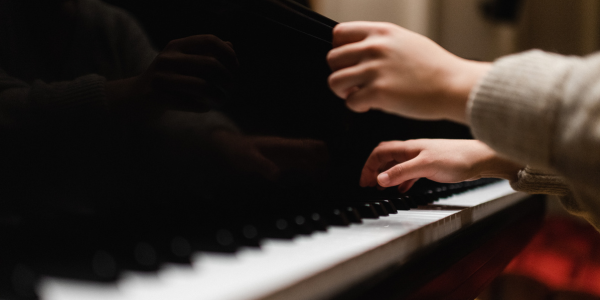To celebrate the latest episode of Piano Inspires Podcast featuring Ingrid Clarfield, we are sharing an excerpted article with her commentary on how she works with children who are musically gifted. Want to learn more about Clarfield? Check out the latest installment of the Piano Inspires Podcast. To learn more, visit pianoinspires.com. Listen to our latest episode with Clarfield on Apple Podcasts, Spotify, YouTube, or our website!

Individual differences can be met by adjusting level, quantity, and goals…
To answer this question, I must first tell you my basic teaching philosophy: Students rise to the level expected of them. With that ideal I teach all students, adjusting my level of expectation with the “gifted” student.
When selecting repertoire for early level students, I use materials that emphasize the following musical elements:
1. Beautiful singing tone
2. Melodic shaping
3. Comprehension of the mood of the piece
4. Balance
5. Timing and intensity of goal notes
With gifted students I can incorporate these elements into their repertoire from the beginning. As they learn to read music, the emphasis includes reinforcing technique and listening skills. Philosophically, while I feel all students should be trained with these goals, it is easier for the gifted student.
To make these musical concepts more obvious, I often assign descriptive music. For beginners, I use The Music Tree series by Frances Clark and Louise Goss (Summy-Birchard). The words relate to the music and each piece is carefully designed to teach or reinforce a specific element. From day one, students are trained to LISTEN and think about the music’s meaning. While this method is good for all of my students, it is ideal for the gifted student. We just move faster and use more supplementary rote pieces and exercises. I particularly like The Music Tree series for teaching upper arm freedom and melodic shaping.
For specific repertoire, I assign music from all four periods. The gifted student is particularly intrigued by the variation of sound and technique that changes with the style. For Baroque music, I use the traditional, easier Bach pieces and the simpler Scarlatti Sonatas. The Introductory editions published by Alfred, Introduction to Handel, Introduction to Scarlatti, and others in this series provide excellent material. Other collections I use are the Early English Sonatinas edited by Rowley (Boosey & Hawkes) and two volumes of Very First Classics edited by Gray (Boosey & Hawkes).
The Classical period is amply represented by the standard Sonatinas plus the Mozart Viennese Sonatinas and the less difficult Haydn Sonatas. I encourage students to think orchestrally for a wide spectrum of sounds and distinct contrast in mood, touches, and dynamics.
The music of the Romantic period involves pedaling skills and rubato from the earliest stages. I applaud the Alfred Publishing Company for the choice of pieces in the Introduction to Chopin, Introduction to Grieg, and Introduction to Schumann editions. These collections include ideal pieces for work on the elements crucial to an understanding of the Romantic style.
The 20th century provides us with an abundance of outstanding early-level music by Prokofiev, Shostakovich, Kabalevsky, Bartok, and Gretchaninoff. This repertoire encourages communication of moods and a wide range of dynamics and touch. Two of my favorite living composers of effective descriptive pieces are Dennis Alexander and Seymour Bernstein.
We hope you enjoyed this excerpt from Clarfield and Appleby’s article about working with children who are gifted. You can read the entire article by clicking here.
MORE ON INGRID CLARFIELD
- PIANO MAGAZINE ARTICLE: Dedication to excellence: An interview with Ingrid Clarfield by Sam Holland
- WEBINAR: From OK to WOW: Making Competent Performances Exceptional with Ingrid Jacobson Clarfield
- PIANOINSPIRES PAGE: Lifetime Achievement Award
- PIANO MAGAZINE ARTICLE: Proverbs for Pianists by Jancewicz
- PIANO MAGAZINE ARTICLE: What is Appropriate at the Early Level for the Gifted Child? Do You Use a Method Book? by Martha Appleby
- PIANO MAGAZINE ARTICLE: What Have You Learned From Listening to Your Own Children’s Practice? by Elvina Truman Pearce